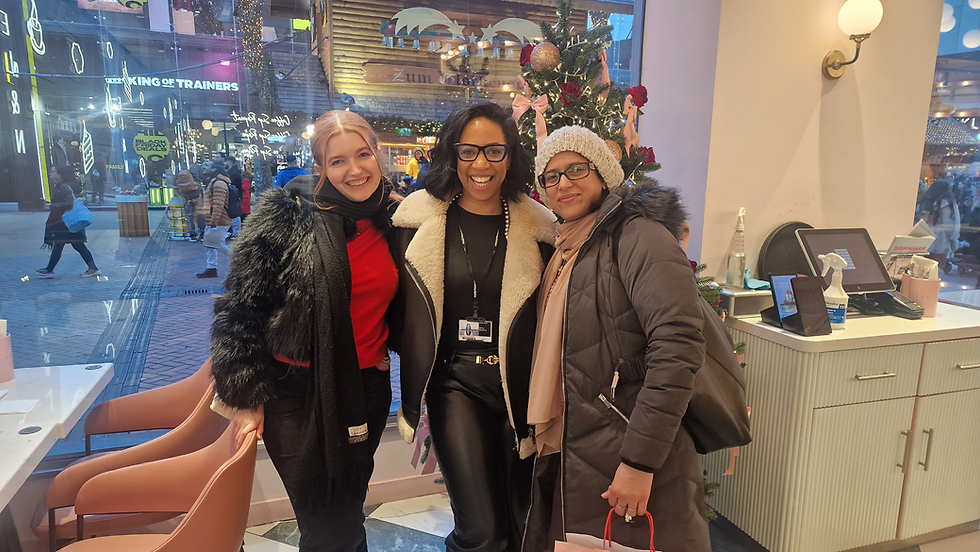Who Gets to Build the Future? Those Who Are Ready.
- Marika Bee
- Apr 3
- 3 min read
When we talk about the future—whether in energy, education, or enterprise—our minds often jump to technology. What will the next breakthrough be? Which jobs will survive? How will AI, automation, and innovation reshape everything?

From my perspective the future won’t be built by those with the flashiest tools.
It will be built by those with the most adaptive teams, the ones ready to learn, evolve, and lead through uncertainty.
A Leadership Lesson in Real Time
Last week, I sat in a leadership workshop focused on Radical Candor—a framework built around caring personally while challenging directly. While I understand its intention, I’ll be honest: I think it’s outdated.
In my experience, Radical Candor too often defaults to performative honesty that can shut people down instead of opening them up. It lacks the emotional nuance needed to foster authentic dialogue, especially during times of change. It assumes everyone receives “challenge” the same way and from my experience they don’t, in fact it can hinder performance.
During the workshop we were asked to form groups and read through a set of different work scenarios where we would apply the 'Radical Candor' approach.
One scenario we analysed really stood out for me:
A college team was manually processing student data for reports. It was time-consuming, inconsistent and missed deadlines. Leadership decided to automate the process—but they skipped consultation and jumped straight into implementation. Staff were expected to adapt—immediately.
Some peers in the workshop recommended the classic Radically Candid approach:
“Just tell the team the change is happening. Be direct. Sell them the idea so they get on board.”
I of course, disagreed. Strongly.
This isn’t candor—it’s coercion dressed as leadership. And it’s exactly why so many digital change efforts fail at the cultural level.
We Need Better Tools: My Alternative Approach
What’s needed instead is a leadership model grounded in emotional intelligence, co-design, and conscious communication.
Here’s what I believe:
We don’t need more “honest feedback.” We need more curious feedback loops.
We don’t need to “challenge directly.” We need to co-create direction.
And we definitely don’t need to weaponise candor when people are trying to navigate complexity.
If I were leading that college initiative, I would’ve invited the team into the solution space:
Ask before assuming: What’s working? What’s broken?
Design with, not for: Give people agency in shaping the rollout.
Create psychological safety: Frame change as an opportunity, not a threat.
A Better Approach: Design WITH, Not For
If I were leading that change, I would’ve started differently:
Engage the team in defining the problem, not just the solution
Run a short discovery sprint to surface current pain points and improvement ideas
Co-design a rollout that includes peer champions, training buffers, and space for feedback
Communicate the why, not just the what
That’s what encourages real buy-in—not just surface-level compliance.
The Be Ready Framework: Building Tech-Confident Teams
This is exactly why I created the Be Ready Business Framework—a model that helps leaders shift culture and support their teams through the messy, very human journey of digital adoption. I've shared this with colleges nationally and regional business leaders across the West Midlands to help people embrace new tech with confidence, because readiness is not about perfection. It’s about recognising opportunity to create space for change and growth.
So, Who Gets to Build the Future?
Not those who push change from the top down. Not those who mistake candor for control. The future belongs to those who build trust, not just tech. Who lead with curiosity, not just certainty. Who invite people into the process and design with them, not around them. Because being future-ready isn’t just about adopting new tools. It’s about creating the culture, mindset and safety that allows people to grow into change. So if you’re asking yourself, “How do we become more innovative?” Start by asking: “Are we listening deeply enough?”
Ready to Lead with Empathy and Innovation?
Whether you're navigating workforce transformation, scaling innovation support, or rethinking your change leadership approach—I'm here to help.
🔗 Connect with me on LinkedIn
Let’s build the future—together, and ready for it.




Comentários